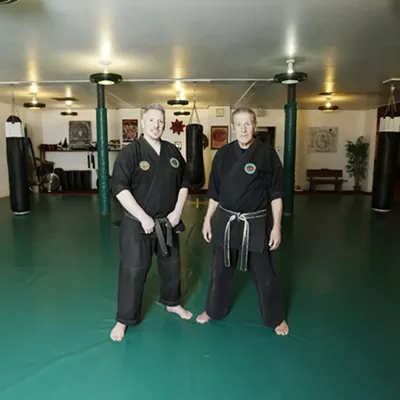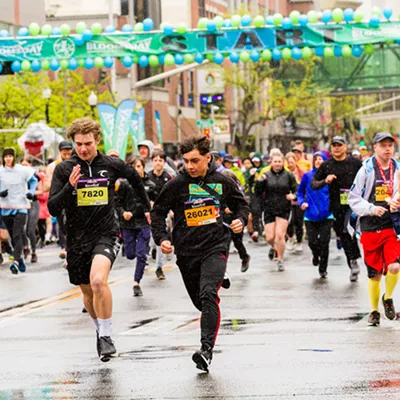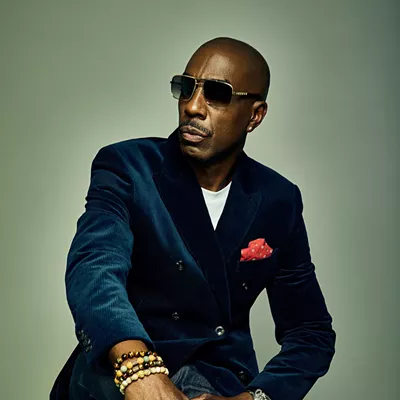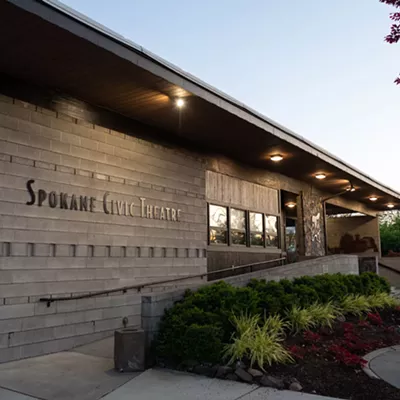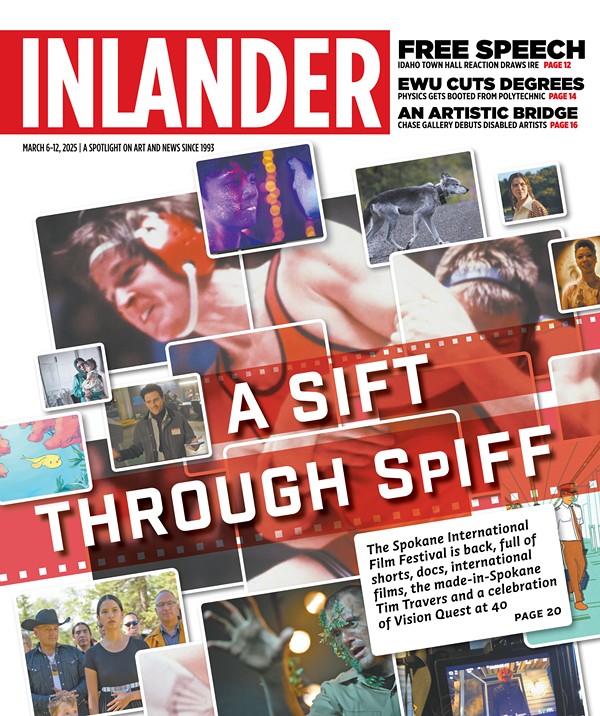Rick Steltenpohl spent the night before the very first Hoopfest taping out 35 makeshift basketball courts on the streets of downtown Spokane. It was June 29, 1990. The task took all night. “We were scrambling,” says the 46-year-old, who now heads the huge annual event. Two weeks before, only 100 teams had signed up for the inaugural 3-on-3 tournament. It was disheartening. He and the Hoopfest brain trust had hoped for 200.
By the end of deadline day, they had 512 teams.
Hoopfest 2009

Rick Steltenpohl on 20 years of Hoopfest
Kareem Abdul-Jabbar on what basketball teaches us
“The big thing is we had to bracket all those teams by hand,” says Rick Betts, a Spokane CPA and one of the event’s founding members. “You think, ‘Five hundred pieces of paper — how big a deal is that?’ It’s a huge effort. I didn’t get a lot of work work done that week.”
That Hoopfest Eve, Betts, Steltenpohl and a ragtag team of friends and volunteers set to the streets. “We got a few construction guys that really saved the day. Wayne Davis, I remember, he’s a framer. He came and ran the forklift, and basically we just all did what he told us to do,” says Betts. “We were there through the night and saw the sunrise. We finished the setup around six in the morning.”
Worse, because they’d been so worried they wouldn’t have enough teams, they had twisted the arms of everyone involved to participate in their own teams. So after a sleepless night of taping and prepping, everyone got changed into shorts and sneakers and signed in with their court monitors. Game on.
The idea for Hoopfest was conceived by two separate people at around the same time, says Steltenpohl. Jerry Schmidt thought of it as a fund-raiser for his pet cause, the Special Olympics. Rick Betts stumbled upon a Gus Macker tournament on Pennsylvania Avenue in Washington, D.C., during a business trip. It wasn’t until Betts visited a tournament in Seattle that he was made aware of Schmidt’s idea — by someone from the Sonics organization. “I was like, ‘OK, whatever,’” Betts recalls. “Sure enough, that was Jerry Schmidt.”
Shortly after, he and Schmidt met and realized they had an uphill battle: how to get the city to shut down the streets, the businesses to be OK with that and the players to lace up. Certainly Bloomsday helped pave the way, with a model for a successful, mass-participation sporting event that made shutting down broad swaths of the city worthwhile. But, Betts says, nobody had ever heard of Hoopfest, basketball wasn’t as big then as it is now (a debatable point), and the event would cut off flow to downtown businesses for a whole weekend, not just a few hours on a Sunday morning.
“If it’s some random thing with not that much acceptance, then why would [businesses] do that?” Betts wondered. “Is it fun? Is it worth their time?”
Even the name of the tournament was shaky. “We debated the name hard, and we really couldn’t come up with a better [one],” says Steltenpohl. “‘Hoopfest’ was always kind of there.”
But while the nomenclature, the sponsorship, the marketing and promotion were all up in the air for a while, at least they had the rules down.
“We knew it was going to be 3-on-3,” says Betts. “The beauty of the 3-on-3 concept is everybody’s always touching the ball and involved in the game. It’s a much more inclusive sport, and you can play on half-court, which means we can get more basketball action in less space.”
Betts continues, “The other thing is you create brackets where you play against similarly skilled players — they’re about your height, they’re about your age, they play about as good as you do. The goal is way more teams, in a situation where you have a chance of competing in your bracket and doing reasonably well. [Plus], you’re playing in the summer, outdoors, on a downtown street. That’s the whole dynamic that we had envisioned.”
Not that there weren’t still some wrinkles to iron out.
“If you got fouled that first year: no free throw,” says Steltenpohl. “You might as well tackle [people]. If you’re gonna get a layup, and I tackle you, what happens? You just take it out. Now we’ve incorporated foul shots for every foul, and if it’s a flagrant or intentional foul, you get the ball and the free throw, and [the other guy] is not gonna be in the game anymore.”
Twenty years after that scrambling, obsessive weekend, Hoopfest is the biggest 3-on-3 streetball tournament in the world, with 6,700 teams playing some 13,000 games on 428 courts. This year, they’ll even get official recognition, as the Guinness World Records will be on hand this weekend to put Spokane on the books.
Steltenpohl and Betts attribute the event’s success to the community — to its 3,000 volunteers, to the grassroots nature of its organization, and even to the size of the city (big enough to draw a ton of people, small enough that Hoopfest isn’t just a blip on the radar to its residents). Many of the other tournaments around the country, Betts says, have been for-profit ventures. “The problem is, it’s so labor-intensive that if you’re going to do a first-class event that really runs well, you’ve got no hope,” he says. “Because people aren’t going to volunteer so you can make money on your tournament.” Hoopfest’s nonprofit organization, on the other hand, has donated more than $1 million to Special Olympics, the YMCA and YWCA, St. Luke’s and other charities, as well as building 20 outdoor courts around the area.
That goodwill may make the event easier for downtown businesses to swallow, Betts says. “We like to believe we’re bringing all these people downtown who aren’t normally here, and they’re going to come spend money. In some cases, that may be true. In other case, that may not be true,” he notes. “For the restaurants, they make a ton of money that weekend. For them, it’s a huge win-win. For Huppin’s … it shuts them down. Nobody’s down there buying TVs and stereos. [But] they take one for the team. They are very supportive.”
Six full-time staff now run Hoopfest year-round. In the future, it could be even more. The event saw enormous growth in its early days, adding around 500 teams each year. Though it leveled off around 2002 (hovering around 6,000 teams), it took off again last year and in 2009.
Steltenpohl notes that they’re a bit landlocked by the limits of downtown Spokane — Second Avenue and Boone on the south and north, and Monroe and Browne on the west and east. “Maybe ultimately there is [a limit],” he admits.
Still, his attitude is the same as it was in June 1990, as he spent the night furiously taping off streets for the droves of last-minute registrants: “If you wanna play, we’re gonna find you a court.”




